Numerical and Experimental Evaluation of a CFRP Fatigue Strengthening for Stringer-Floor Beam Connections in a 19th Century Riveted Railway Bridge
Abstract
1. Introduction
2. Global FE Model of Redondela Bridge
2.1. Bridge Description
2.2. Bridge Numerical Model
3. Stringer-Floor Beam Connection Specimens
3.1. Description of Test Specimens
3.2. Materials Properties
3.3. Test Set-Up and Instrumentation
4. Local FE Model of Stringer-Floor Beam Connection
4.1. Model Description
4.2. Calibration of Local FE Model
4.3. Results from Global-Local FE Models
5. Design of CFRP Strengthening to Prevent Fatigue Crack Initiation
5.1. Fatigue Criteria: CLD Method
5.2. CFRP Design by Local FE Model and CLD Method
5.3. Experimental Validation of CFRP Strengthening
6. Discussion
7. Conclusions
Author Contributions
Funding
Institutional Review Board Statement
Informed Consent Statement
Data Availability Statement
Acknowledgments
Conflicts of Interest
References
- Olofsson, I.; Elfgren, L.; Bell, B.; Paulsson, B.; Niederleithinger, E.; Sandager Jensen, J.; Feltrin, G.; Täljsten, B.; Cremona, C.; Kiviluoma, R.; et al. Assessment of European railway bridges for future traffic demands and longer lives—EC project ‘Sustainable Bridges’. Struct. Infrastruct. Eng. 2005, 1, 93–100. [Google Scholar] [CrossRef]
- Fisher, J.W.; Yen, B.T.; Wang, D. Fatigue and Fracture Evaluation for Rating Riveted Bridges; Transportation Research Record 302; Transportation Research Board: Washington, DC, USA, 1987; pp. 25–35. [Google Scholar]
- Wang, D. Fatigue Behaviour of Mechanically Fastened Double-Angle Shear Connections in Steel Bridges. Ph.D. Thesis, Lehigh University, Bethlehem, PA, USA, 1990. [Google Scholar]
- Al-Emrani, M. Fatigue Performance of Stringer-to-Floor-Beam Connections in Riveted Railway Bridges. J. Bridge Eng. 2005, 10, 179–185. [Google Scholar] [CrossRef]
- Imam, B.M.; Righiniotis, T.D.; Chryssanthopoulos, M.K. Numerical modelling of riveted railway bridge connections for fatigue evaluation. Eng. Struct. 2007, 29, 3071–3081. [Google Scholar] [CrossRef]
- Jimenez-Vicaria, J.D.G.; Pulido, M.D.; Castro-Fresno, D. Influence of carbon fibre stiffness and adhesive ductility on CFRP-steel adhesive joints with short bond lengths. Constr. Build. Mater. 2020, 260, 119758. [Google Scholar] [CrossRef]
- Bocciarelli, M.; Colombi, P.; Fava, G.; Poggi, C. Fatigue performance of tensile steel members strengthened with CFRP plates. Compos. Struct. 2009, 87, 334–343. [Google Scholar] [CrossRef]
- Chataigner, S.; Benzarti, K.; Forêt, G.; Caron, J.F.; Gemignani, G.; Brugiolo, M.; Calderon, I.; Pinero, I.; Birtel, V.; Lehman, F. Lehmann. Design and testing of an adhesively bonded CFRP strengthening system for steel structures. Eng. Struct. 2018, 177, 556–565. [Google Scholar] [CrossRef]
- Jimenez-Vicaria, J.D.; Castro-Fresno, D.; Pulido, M.D.G. Fatigue behaviour of adhesive bonds in tensile CFRP-metal double-strap joints with puddle iron plates taken from a 19th century bridge. Compos. Struct. 2020, 251, 112600. [Google Scholar] [CrossRef]
- Tavakkolizadeh, M.; Saadatmanesh, H. Fatigue strength of steel girders strengthened with carbon fiber reinforced polymer patch. J. Struct. Eng. 2003, 129, 186–196. [Google Scholar] [CrossRef]
- Dawood, M.; Rizkalla, S.; Sumner, E. Fatigue and overloading behavior of steel-concrete composite flexural members strengthened with high modulus CFRP materials. J. Compos. Constr. 2007, 11, 659–669. [Google Scholar] [CrossRef]
- Kim, Y.J.; Harries, K.A. Fatigue behavior of damaged steel beams repaired with CFRP strips. Eng. Struct. 2011, 33, 1491–1502. [Google Scholar] [CrossRef]
- Ghafoori, E.; Motavalli, M.; Botsis, J.; Herwig, A.; Galli, M. Fatigue strengthening of damaged metallic beams using prestressed unbonded and bonded CFRP plates. Int. J. Fatigue 2012, 44, 303–315. [Google Scholar] [CrossRef]
- Zhao, X.L. FRP-Strengthened Metallic Structures; Taylor and Francis: Boca Raton, FL, USA, 2013. [Google Scholar]
- Karbhari, V.M. Rehabilitation of Metallic Civil Infrastructure Using Fiber Reinforced Polymer (FRP) Composites; Woodhead Publishing: Cambridge, UK, 2014. [Google Scholar]
- Hosseini, A.; Ghafoori, E.; Al-Mahaidi, R.; Zhao, X.; Motavalli, M. Strengthening of a 19th-century roadway metallic bridge using nonprestressed bonded and prestressed unbonded CFRP plates. Constr. Build. Mater. 2019, 209, 240–259. [Google Scholar] [CrossRef]
- Chataigner, S.; Wahbeh, M.; Garcia-Sanchez, D.; Benzarti, K.; Birtel, V.; Fischer, M.; Sopeña, L.; Boundouki, R.; Lehmann, F.; Martín, E.; et al. Fatigue Strengthening of Steel Bridges with Adhesively Bonded CFRP Laminates: Case Study. J. Compos. Constr. 2020, 24, 05020002. [Google Scholar] [CrossRef]
- Heydarinouri, H.; Motavalli, M.; Nussbaumer, A.; Ghafoori, E. Development of Mechanical Strengthening System for Bridge Connections Using Prestressed CFRP Rods. J. Struct. Eng. 2021, 147. [Google Scholar] [CrossRef]
- Ghafoori, E.; Motavalli, M.; Zhao, X.L.; Nussbaumer, A.; Fontana, M. Fatigue design criteria for strengthening metallic beams with bonded CFRP plates. Eng. Struct. 2015, 101, 542–557. [Google Scholar] [CrossRef]
- Proyecto de la parte metálica del viaducto de Redondela y de aumento en las fábricas en la línea de Monforte a Vigo. Signatura C-1173-002. In Archivo Histórico Ferroviario del Museo del Ferrocarril de Madrid; Compañía de los Ferrocarriles de Medina del Campo a Zamora y de Orense a Vigo: Vigo, Spain, 18 April 1884.
- CSI Analysis Reference Manual for SAP2000 Version 20; Computers & Structures Inc.: Berkeley, CA, USA, 2017.
- Ermopoulos, J.; Spyrakos, C. Validated analysis and strengthening of a 19th century railway bridge. Eng. Struct. 2006, 28, 783–792. [Google Scholar] [CrossRef]
- Brencich, A.; Gambarotta, L. Assessment procedure and rehabilitation of riveted railway girders: The Campasso Bridge. Eng. Struct. 2009, 31, 224–239. [Google Scholar] [CrossRef]
- Ghafoori, E.; Prinz, G.; Mayor, E.; Nussbaumer, A.; Motavalli, M.; Herwig, A.; Fontana, M. Finite Element Analysis for Fatigue Damage Reduction in Metallic Riveted Bridges Using Pre-Stressed CFRP Plates. Polymers 2014, 6, 1096–1118. [Google Scholar] [CrossRef]
- EN 1991-2. Eurocode 1: Action on Structures—Part 2-Load on Bridges; Comité Européen de Normalisation (CEN): Brussels, Belgium, 2005. [Google Scholar]
- Pipinato, A.; Pellegrino, C.; Modena, C. Fatigue Damage Estimation in Existing Railway Steel Bridges by Detailed Loading History Analysis. Isrn Civ. Eng. 2012, 2012, 231674. [Google Scholar] [CrossRef]
- Rauert, T.; Hoffmeister, B. Fatigue Verification of a Composite Railway Bridge Detail Based on Testing. Procedia Eng. 2011, 14, 1855–1862. [Google Scholar] [CrossRef][Green Version]
- Bruna, O.A. Puentes Metálicos Ferroviarios de Aragón y su Entorno. Visión Histórica y Structural. Ph.D. Thesis, University of Zaragoza, Zaragoza, Spain, 2016. (In Spanish). [Google Scholar]
- Instrucción para la redacción de proyectos de puentes metálicos. Gac. Madr. Num. 1902, 156, 999–1003.
- UNE-EN ISO 6892-1:2020. Metallic Materials—Tensile Testing—Part 1: Method of Test at Room Temperature; Asociación Española de Normalización: Madrid, Spain, 2020.
- UNE-EN 10025-2:2020. Hot Rolled Products of Structural Steels—Part 2: Technical Delivery Conditions for Non-Alloy Structural Steels; Asociación Española de Normalización: Madrid, Spain, 2020.
- ISO 898-1:2013. Mechanical Properties of Fasteners Made of Carbon Steel and Alloy Steel—Part 1: Bolts, Screws and Studs with Specified Property Classes—Coarse Thread and Fine Pitch Thread; ISO-International Organization for Standardization: Geneva, Switzerland, 2013.
- Guyer, R.C.; Laman, J.A. Distortion-induced stress investigation of double angle stringer-to-floorbeam connections in railroad bridges. Eng. Struct. 2012, 38, 104–112. [Google Scholar] [CrossRef]
- Bursi, O.S.; Jaspart, J.P. Basic issues in the finite element simulation of extended end plate connections. Comput. Struct. 1998, 69, 361–382. [Google Scholar] [CrossRef]
- Abaqus Analysis User’s Guide Version 6. 13; Dassault Systèmes Simulia Corp.: Providence, RI, USA, 2013. [Google Scholar]
- Guyer, R.C. Distortion-Induced Fatigue Investigation of Double Angle Stringer-To-Floorbeam Connections. Master’s Thesis, The Graduate School College of Engineering, The Pennsylvania State University, University Park, State College, PA, USA, 2010. [Google Scholar]
- Al-Emrani, M.; Kliger, R. FE analysis of stringer-to-floor-beam connections in riveted railway bridges. J. Constr. Steel Res. 2003, 59, 803–818. [Google Scholar] [CrossRef]
- Yun, X.; Gardner, L. Stress-strain curves for hot-rolled steels. J. Constr. Steel Res. 2017, 133, 36–46. [Google Scholar] [CrossRef]
- Hu, Y.; Davison, J.; Burgess, I.; Plank, R. Multi-Scale Modelling of Flexible End Plate Connections under Fire Conditions. Open Constr. Build. Technol. J. 2010, 4, 88–104. [Google Scholar] [CrossRef]
- Kamaya, M. Ramberg–Osgood type stress–strain curve estimation using yield and ultimate strengths for failure assessments. Int. J. Press. Vessel. Pip. 2016, 137, 1–12. [Google Scholar] [CrossRef]
- Kontolati, K. Numerical investigation of weak axis I profile connections. In Proceedings of the 9th Hellenic National Conference on Steel Structures, Larisa, Greece, 5–7 October 2017; Steel Structures Research Society (SSRS), Institute of Steel Structures, National Technical University of Athens: Athens, Greece, 7 October. [Google Scholar]
- O’Sullivan, M.; Swailes, T. A Study of Historical Test Data for Better Informed Assessment of Wrought Iron Structures. Int. J. Archit. Herit. 2009, 3, 260–275. [Google Scholar] [CrossRef]
- Moy, S.S.J.; Clarke, H.W.J.; Bright, S.R. The engineering properties of Victorian structural wrought iron. Proc. Inst. Civ. Eng. Constr. Mater. 2009, 162, 1–10. [Google Scholar] [CrossRef]
- Kelton, S.L.; Arwade, S.R.; Lutenegger, A.J. Variability of the Mechanical Properties of Wrought Iron from Historic American Truss Bridges. J. Mater. Civ. Eng. 2011, 23, 638–647. [Google Scholar] [CrossRef]
- Sendeckyj, G.P. Constant life diagrams—A historical review. Int. J. Fatigue 2001, 23, 347–353. [Google Scholar] [CrossRef]
- Ghafoori, E.; Motavalli, M.; Nussbaumer, A.; Herwig, A.; Prinz, G.S.; Fontana, M. Design criterion for fatigue strengthening of riveted beams in a 120-year-old railway metallic bridge using pre-stressed CFRP plates. Compos. Part B 2015, 68, 1–13. [Google Scholar] [CrossRef]
- Hashin, Z. Failure Criteria for Unidirectional Fiber Composites. J. Appl. Mech. 1980, 47, 329–334. [Google Scholar] [CrossRef]
- Barbero, E.J. Introduction to Composite Materials Design; Taylor and Francis: Philadelphia, PA, USA, 1999. [Google Scholar]
- Jimenez-Vicaria, J.; David, G.; Pulido, M.D.; Castro-Fresno, D. Evaluation of the bond behaviour in CFRP-steel double-strap joints. In In Proceedings of the 7th Euro-American Congress on Construction Pathology, Rehabilitation Technology and Heritage Management, Rehabend, Caceres, Spain, 15–18 May 2018; Issue 221479. pp. 2248–2255. [Google Scholar]
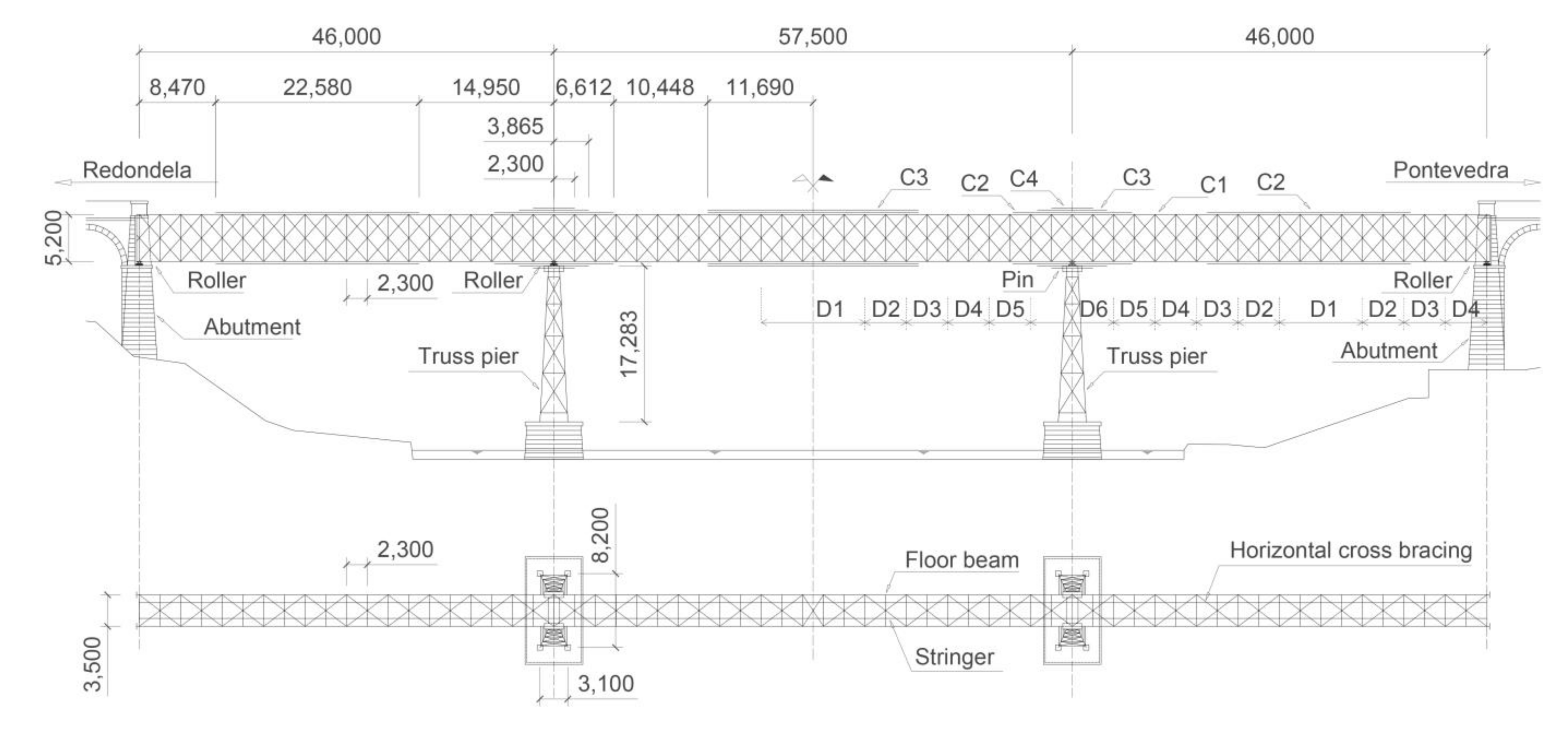
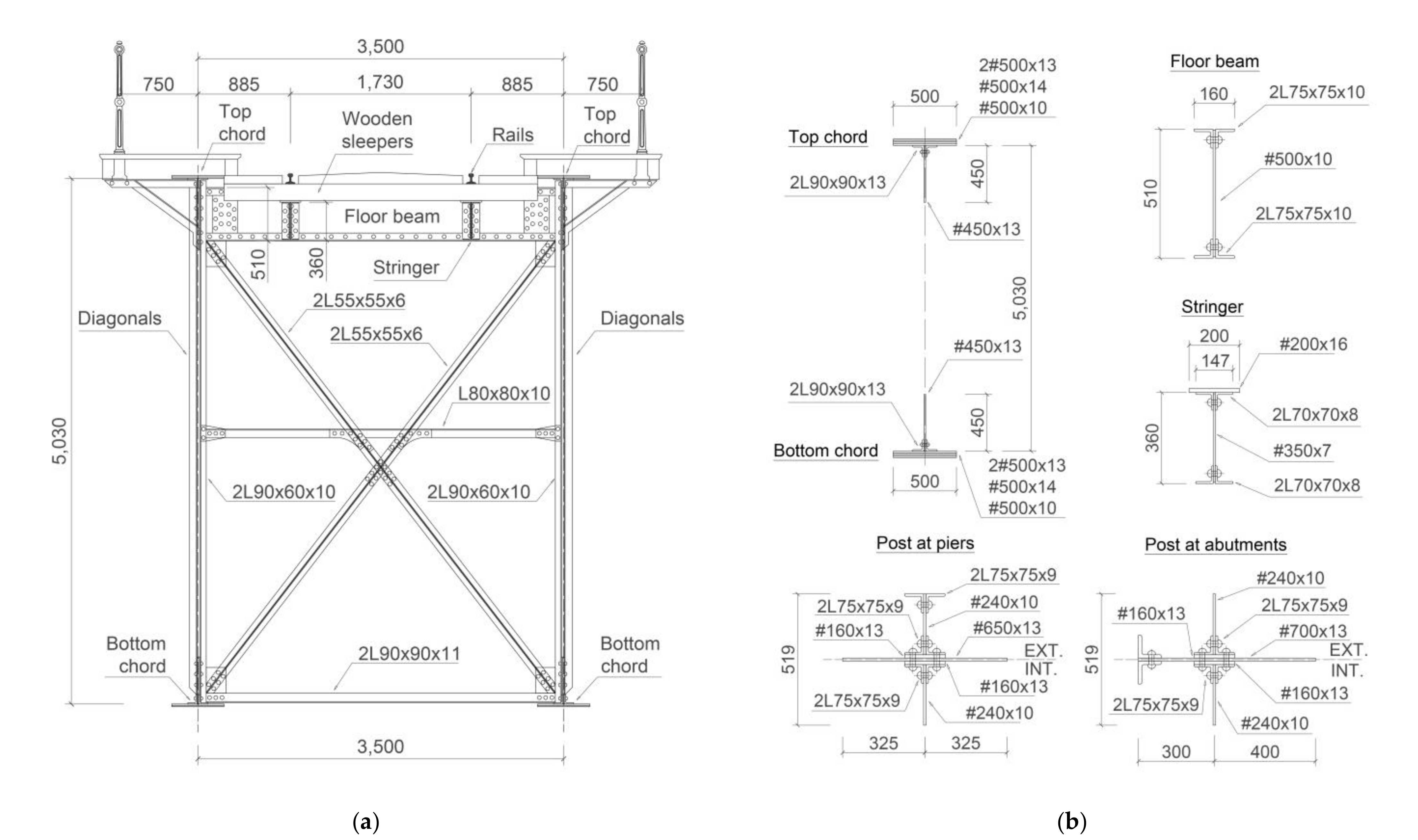
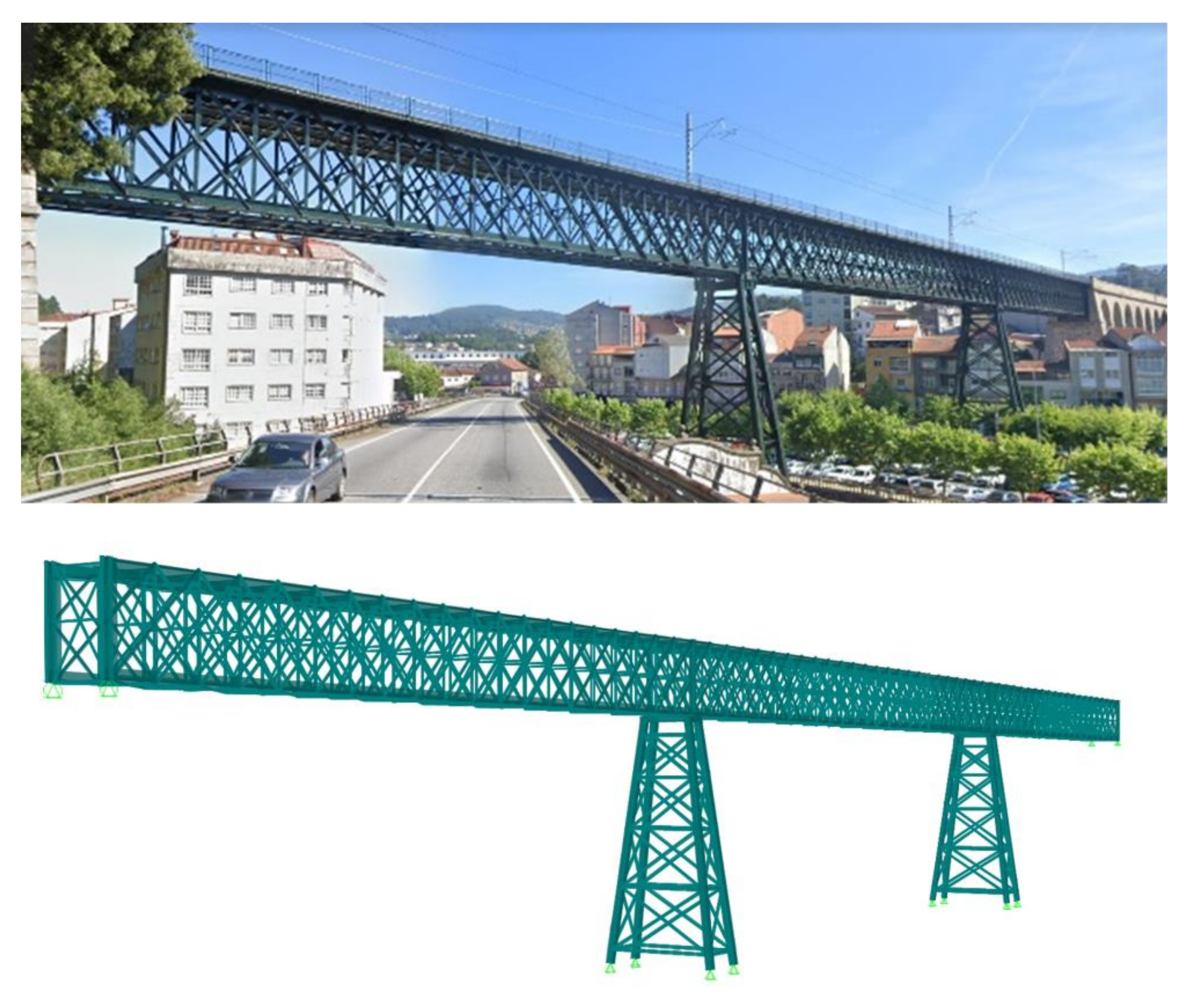
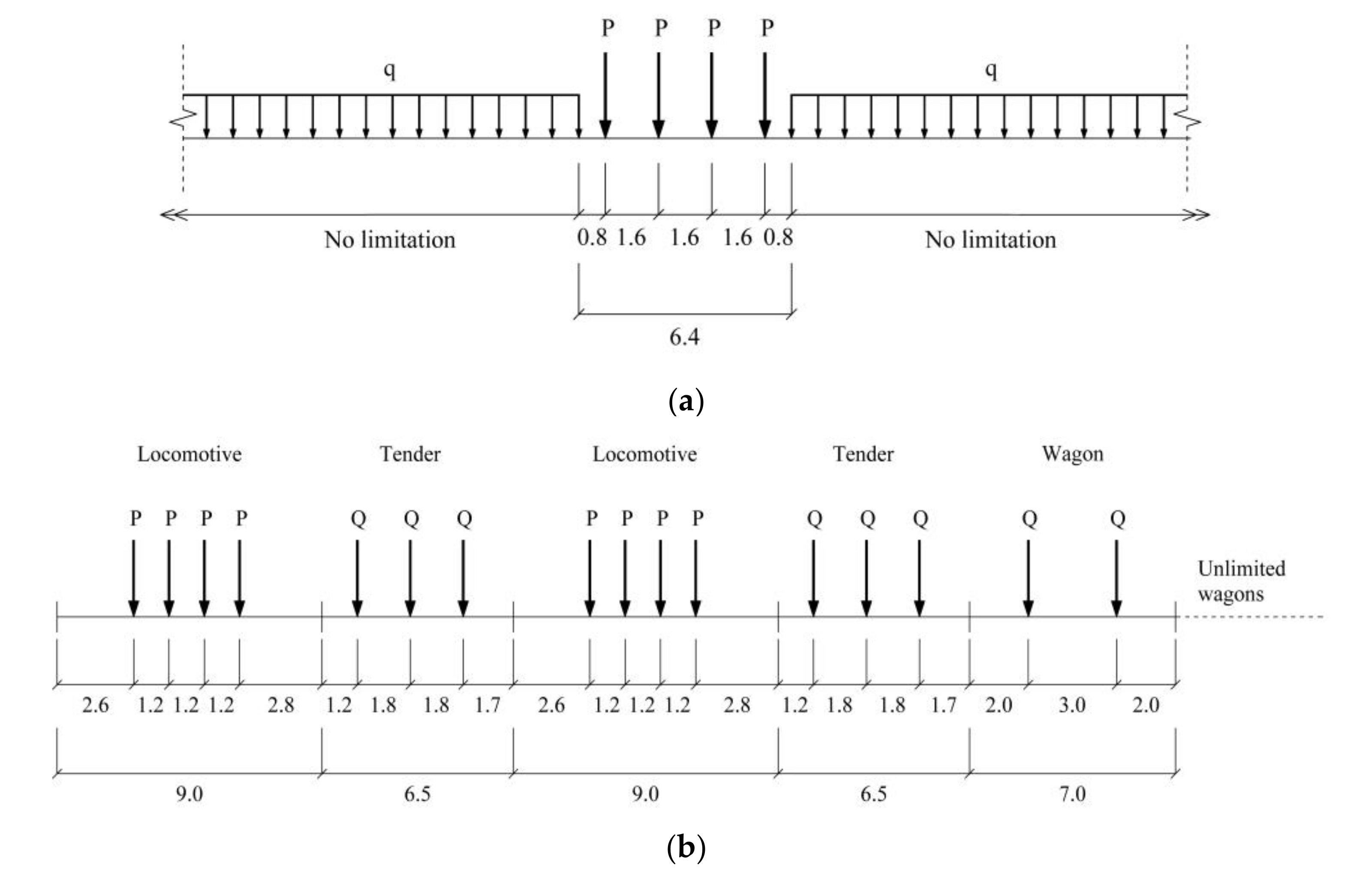
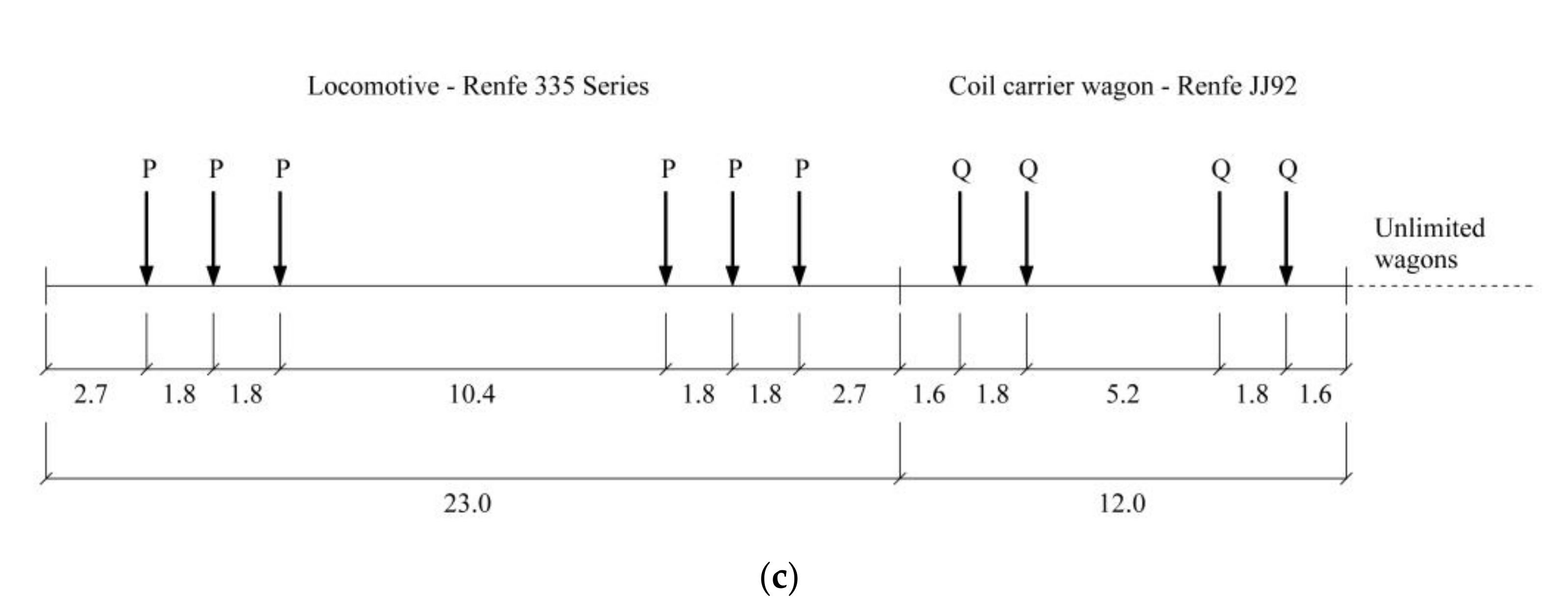
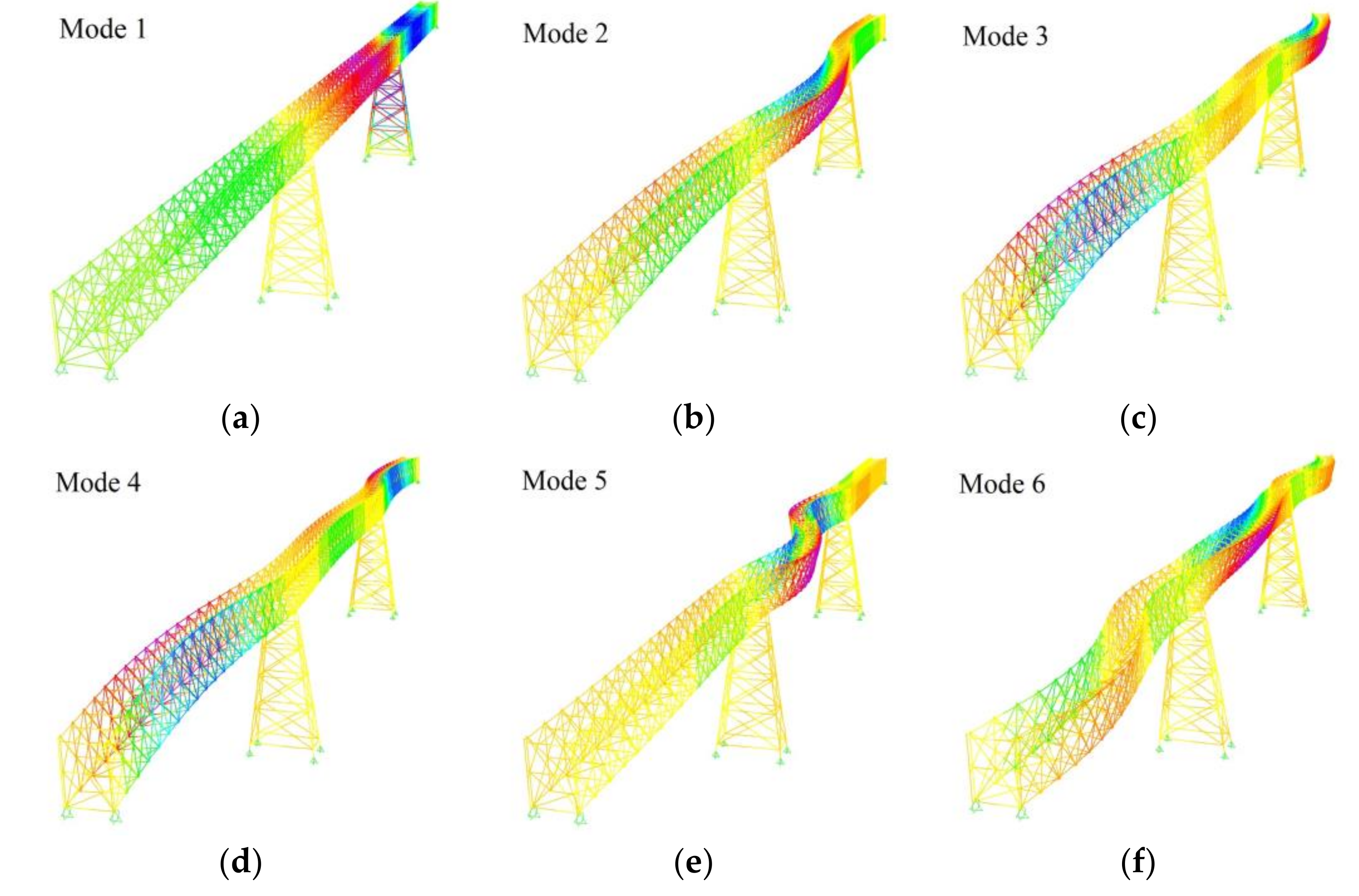
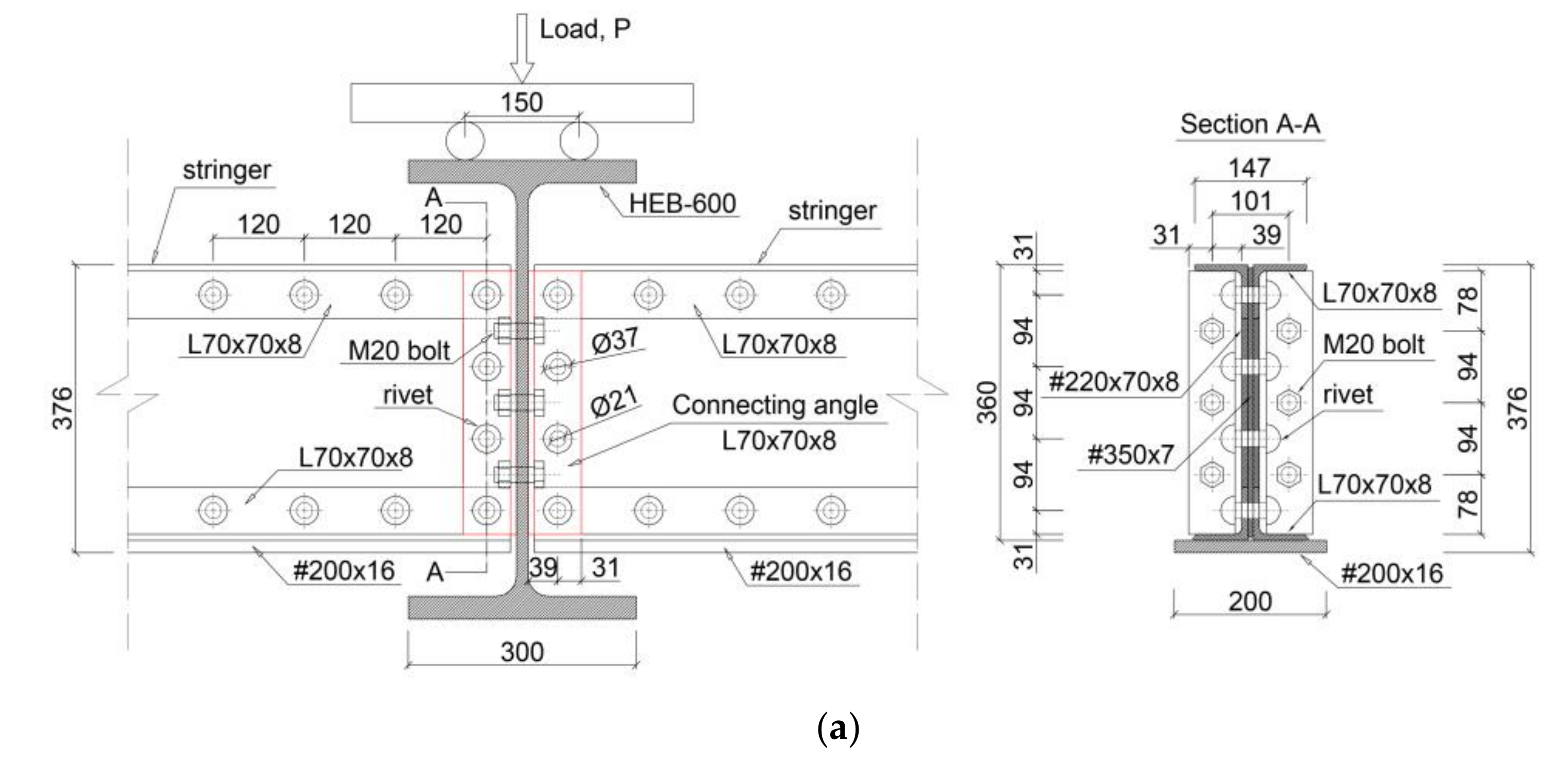
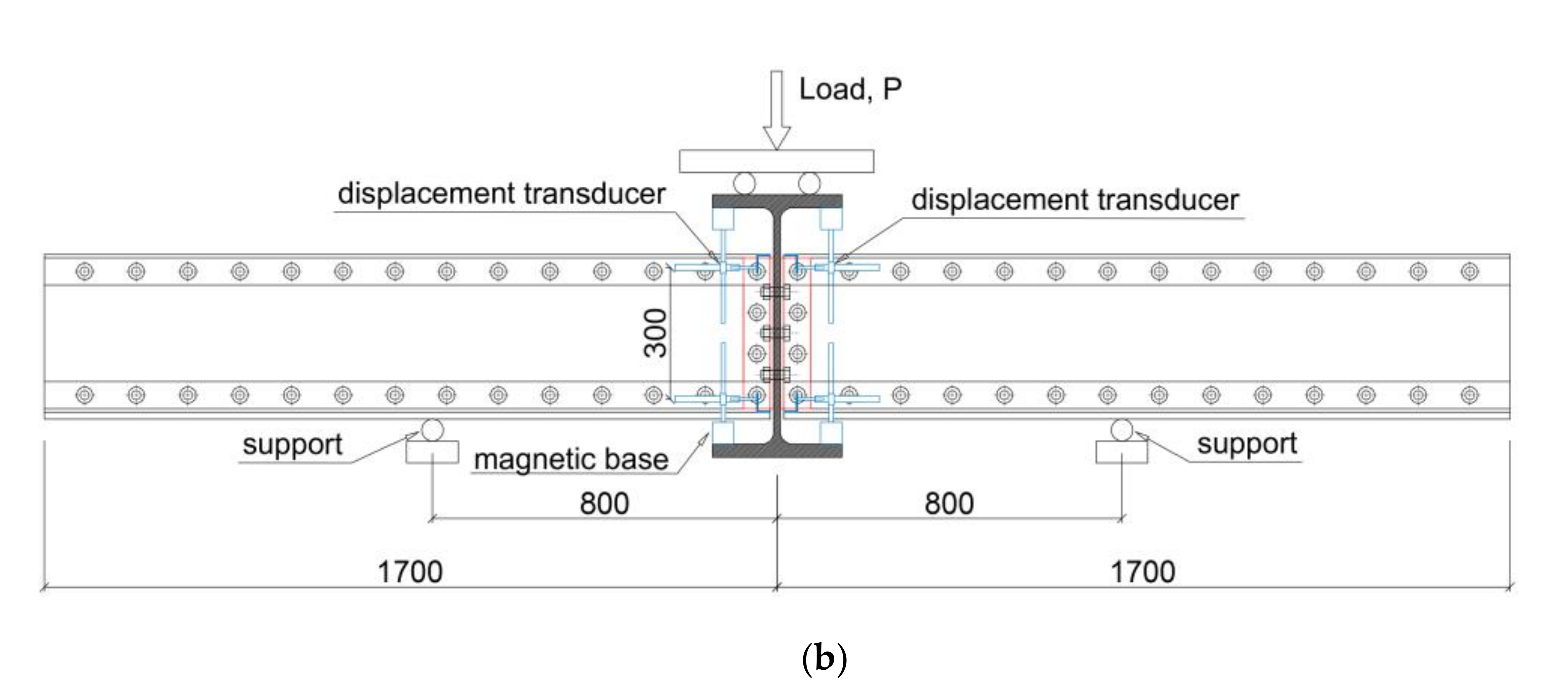
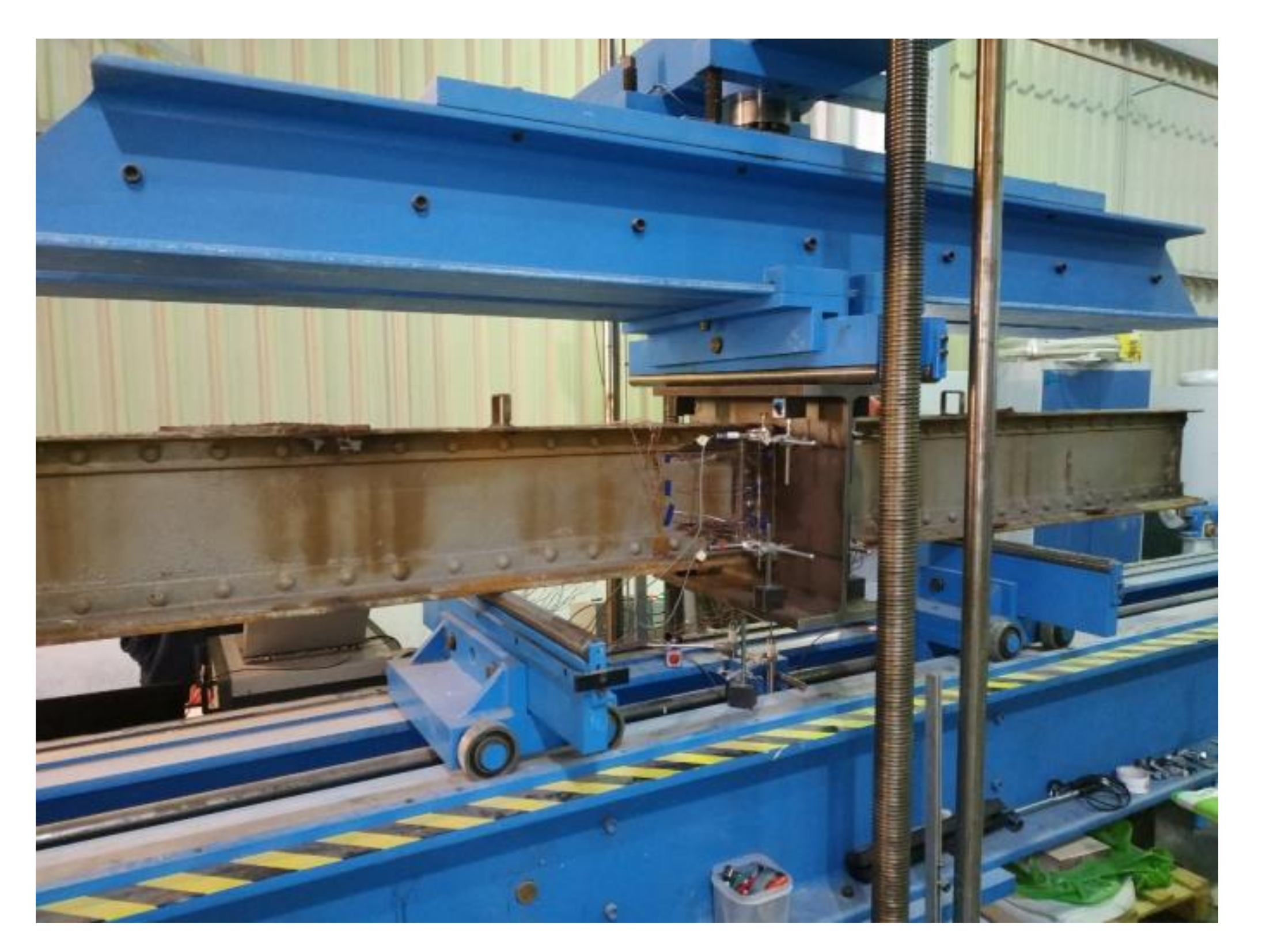
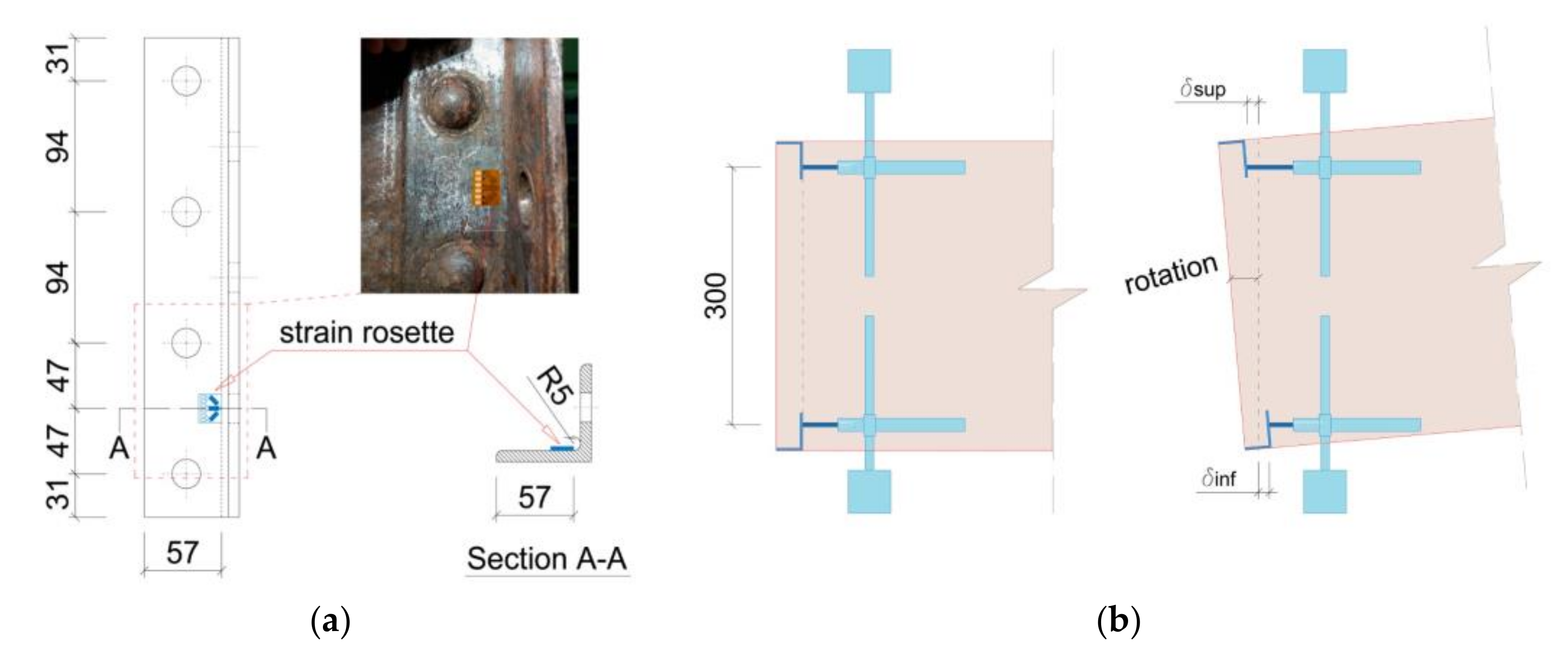
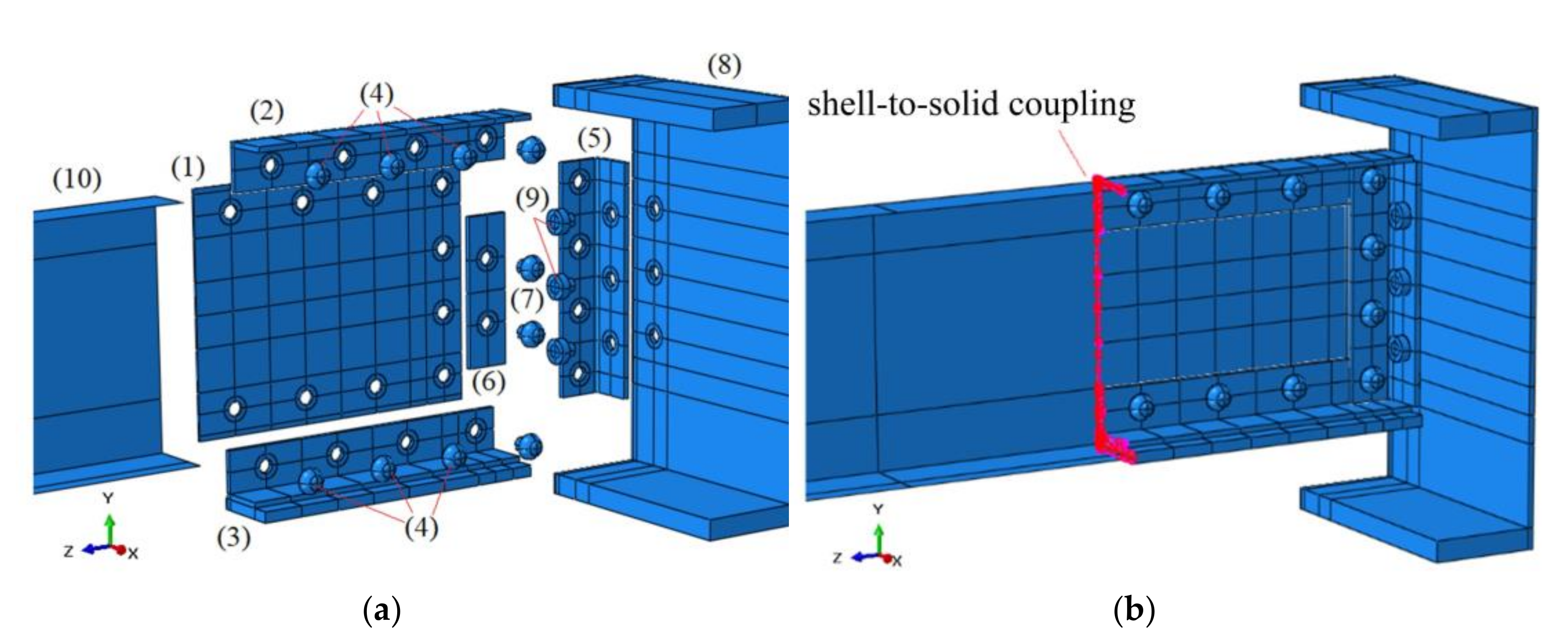

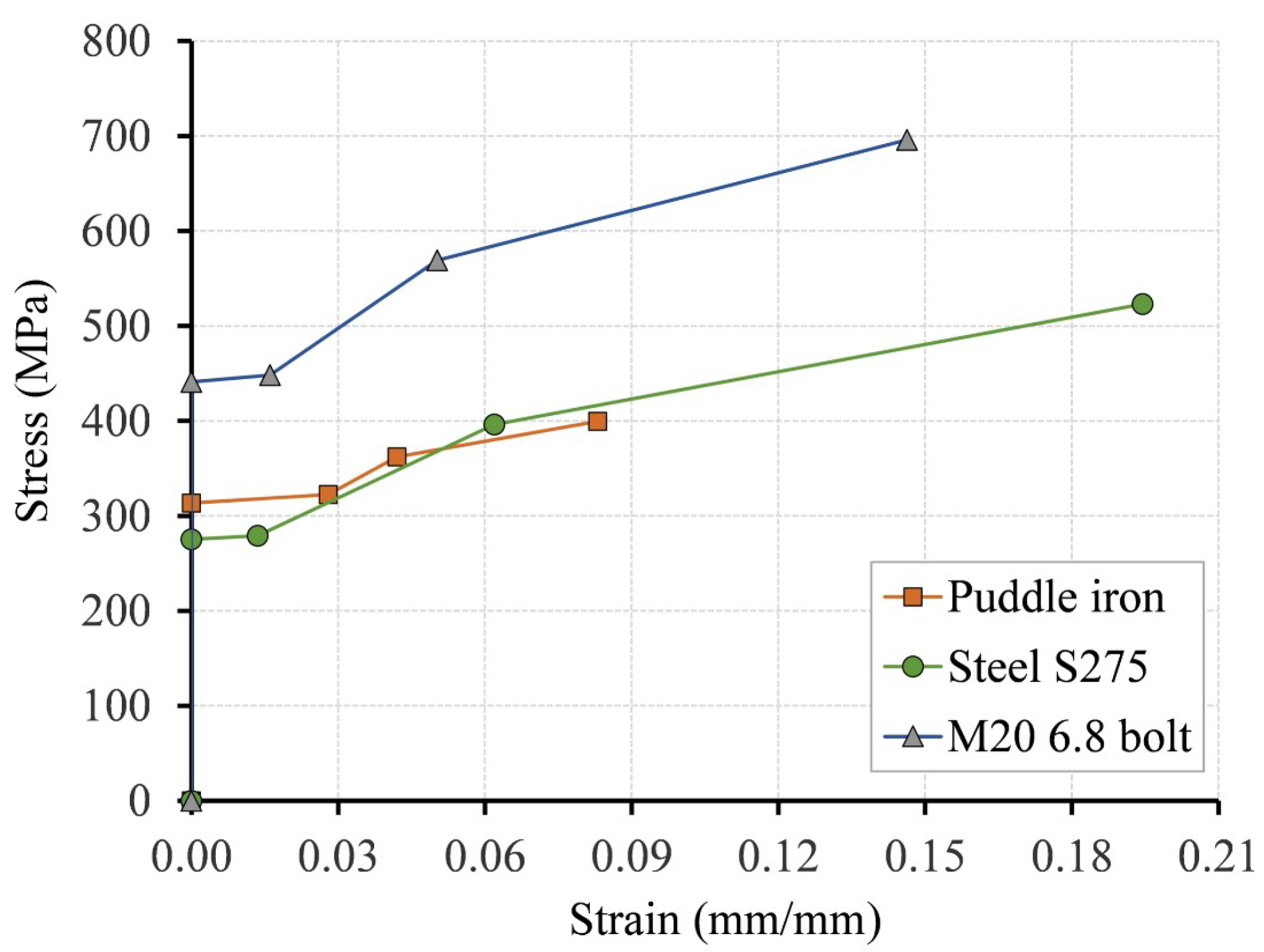
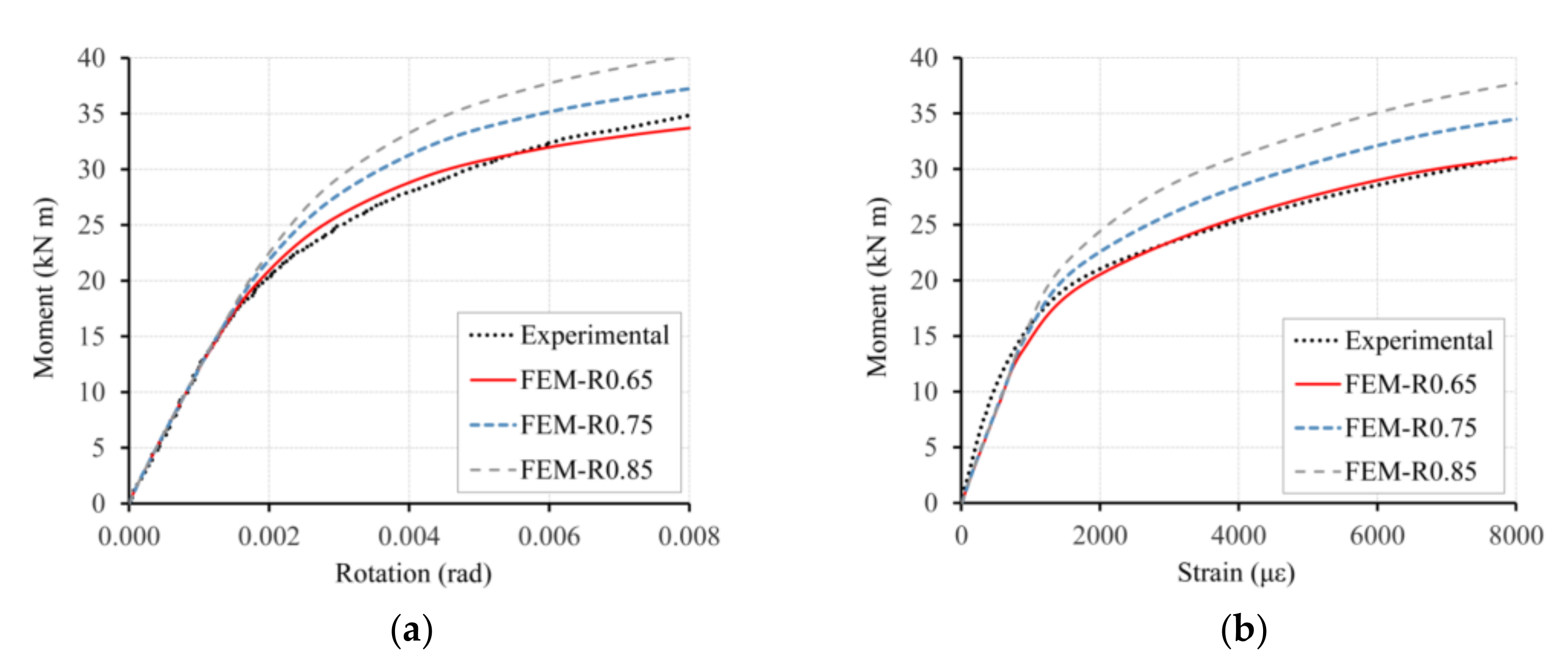
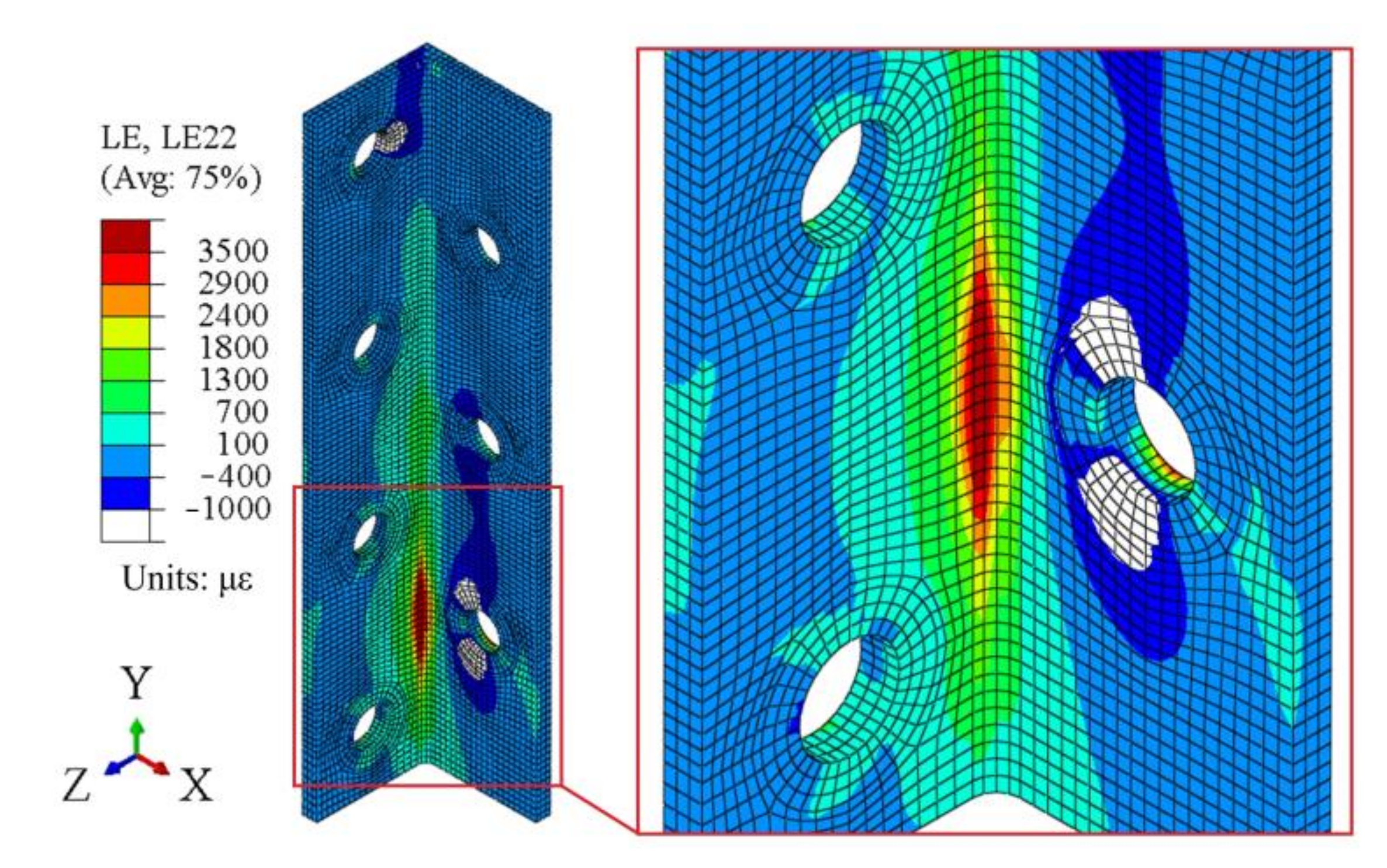
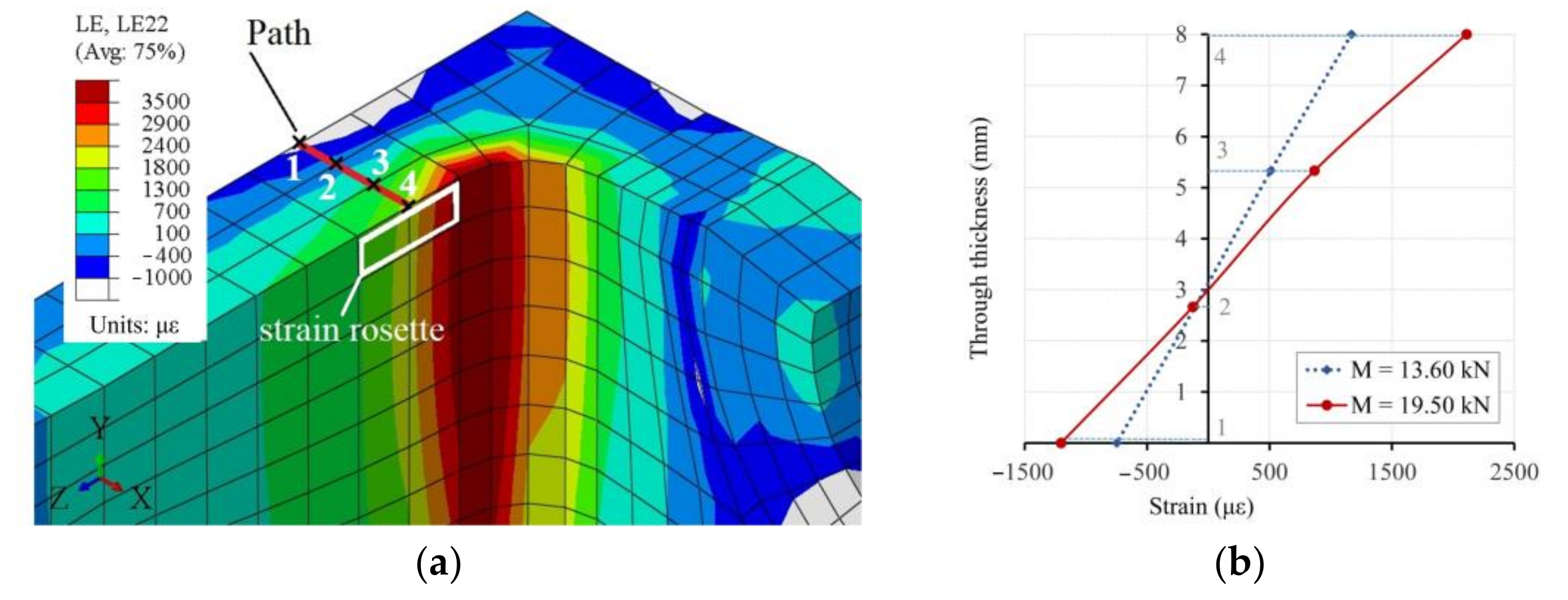
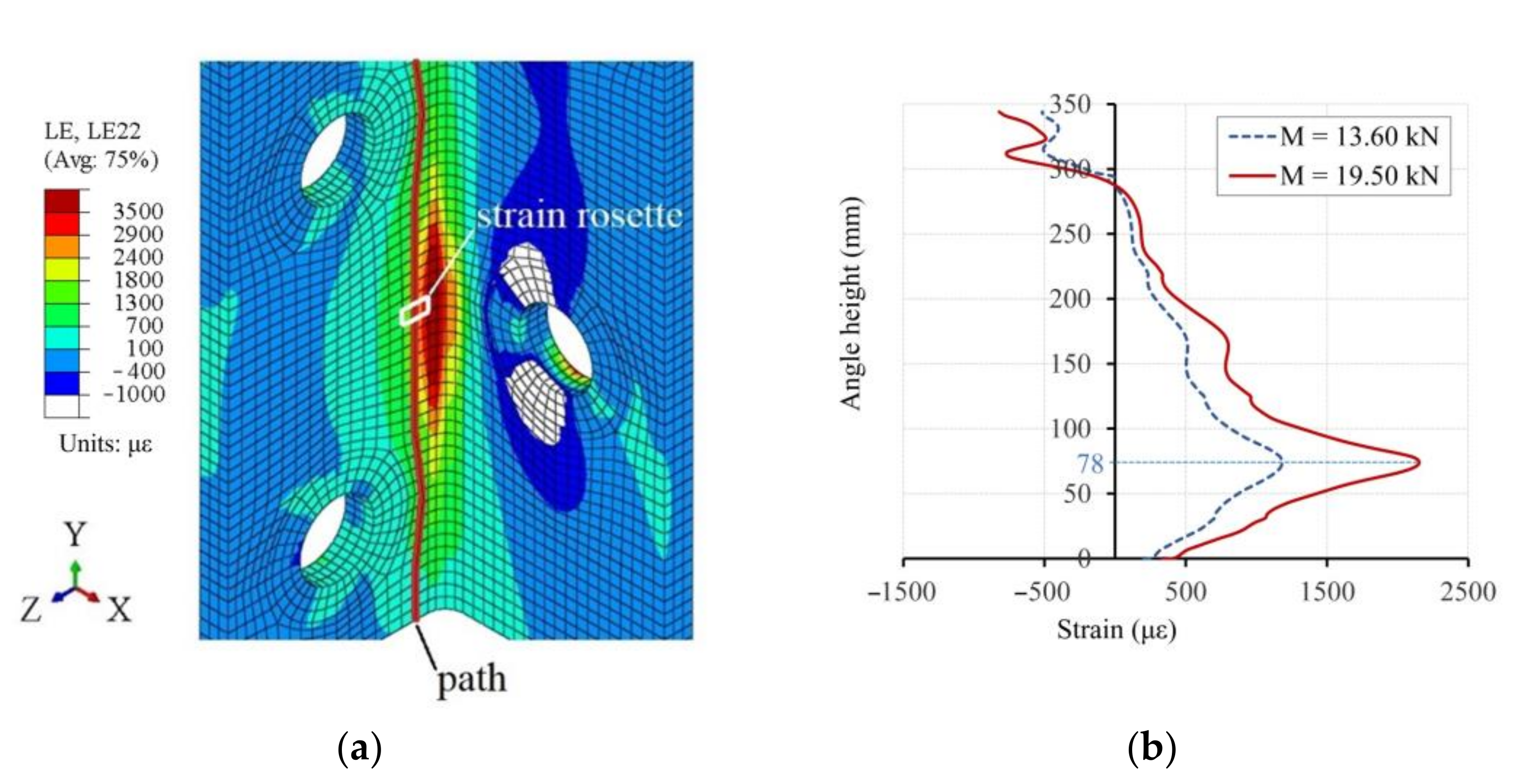
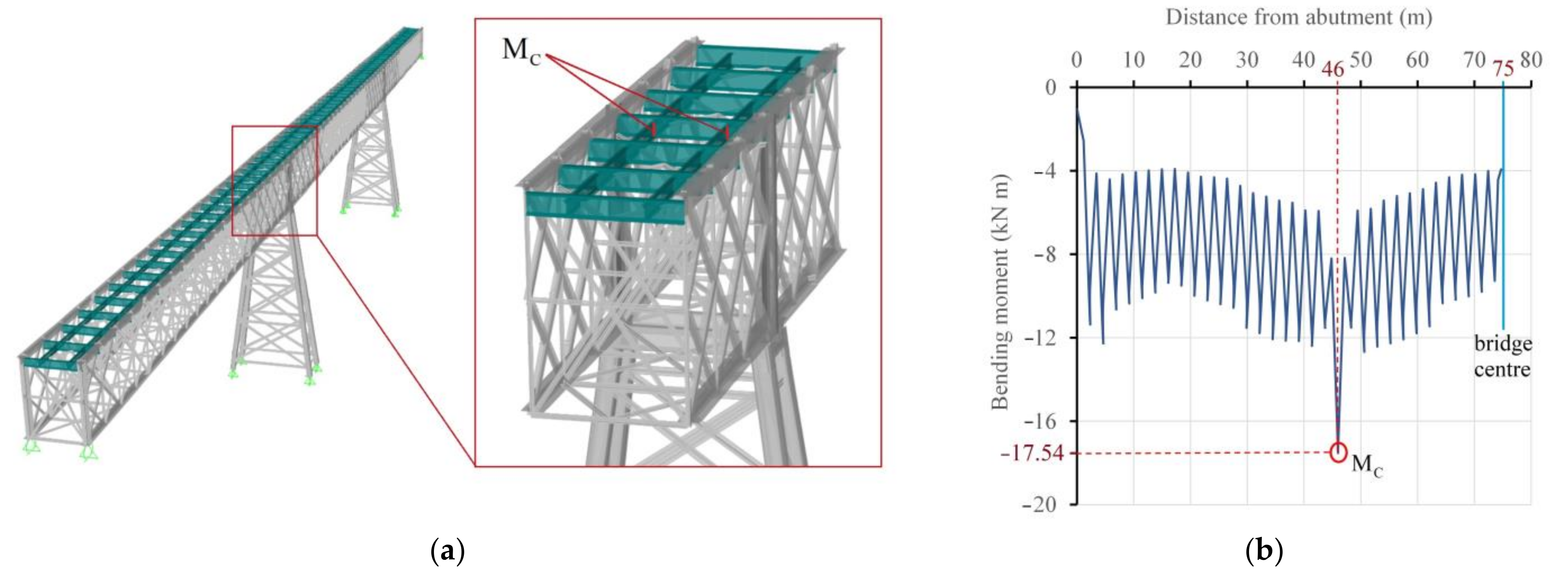
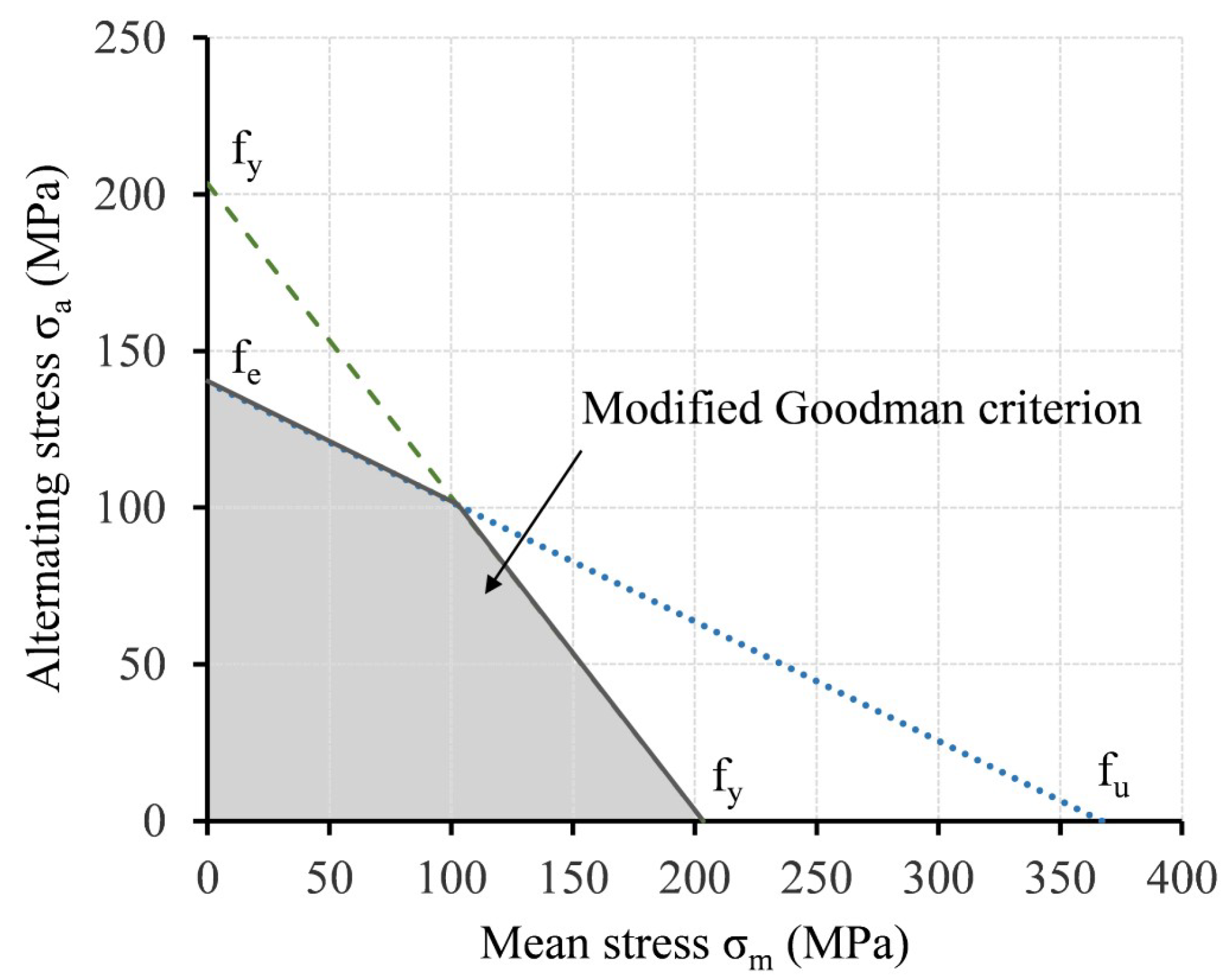
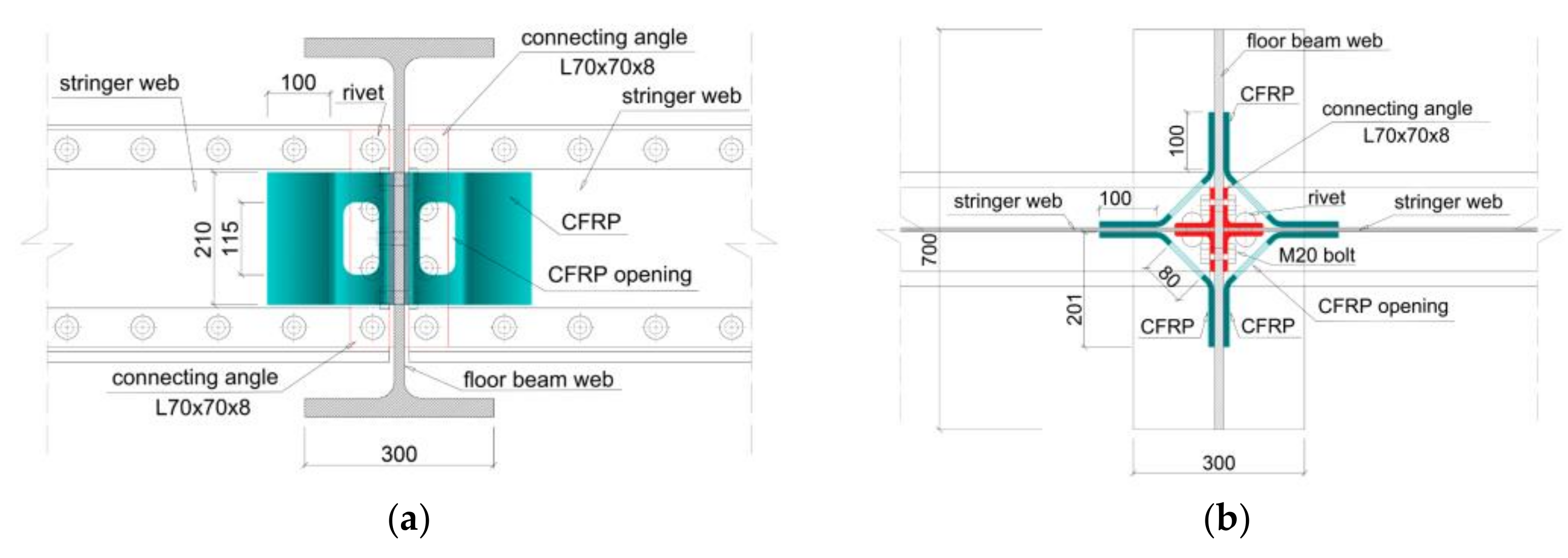



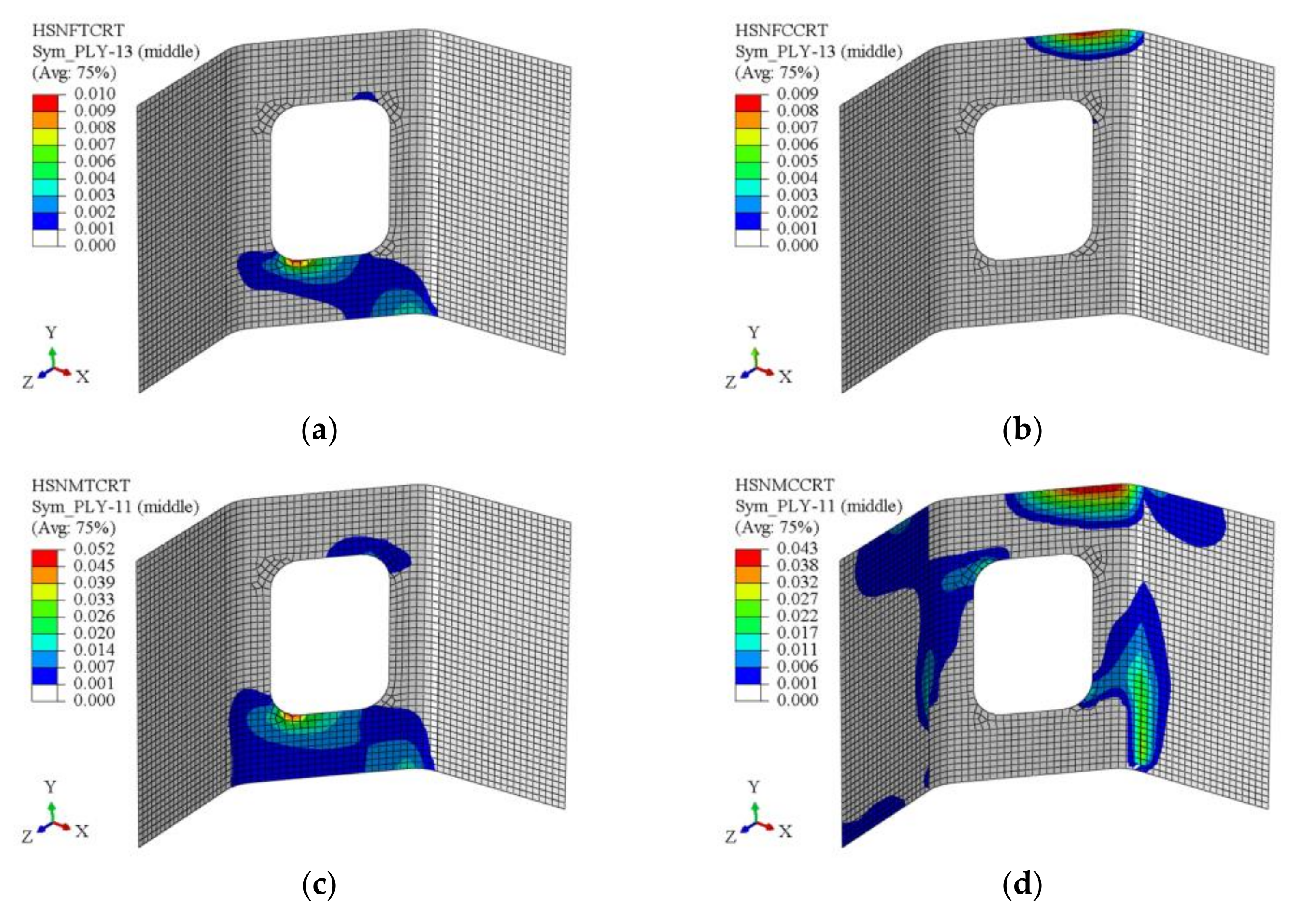

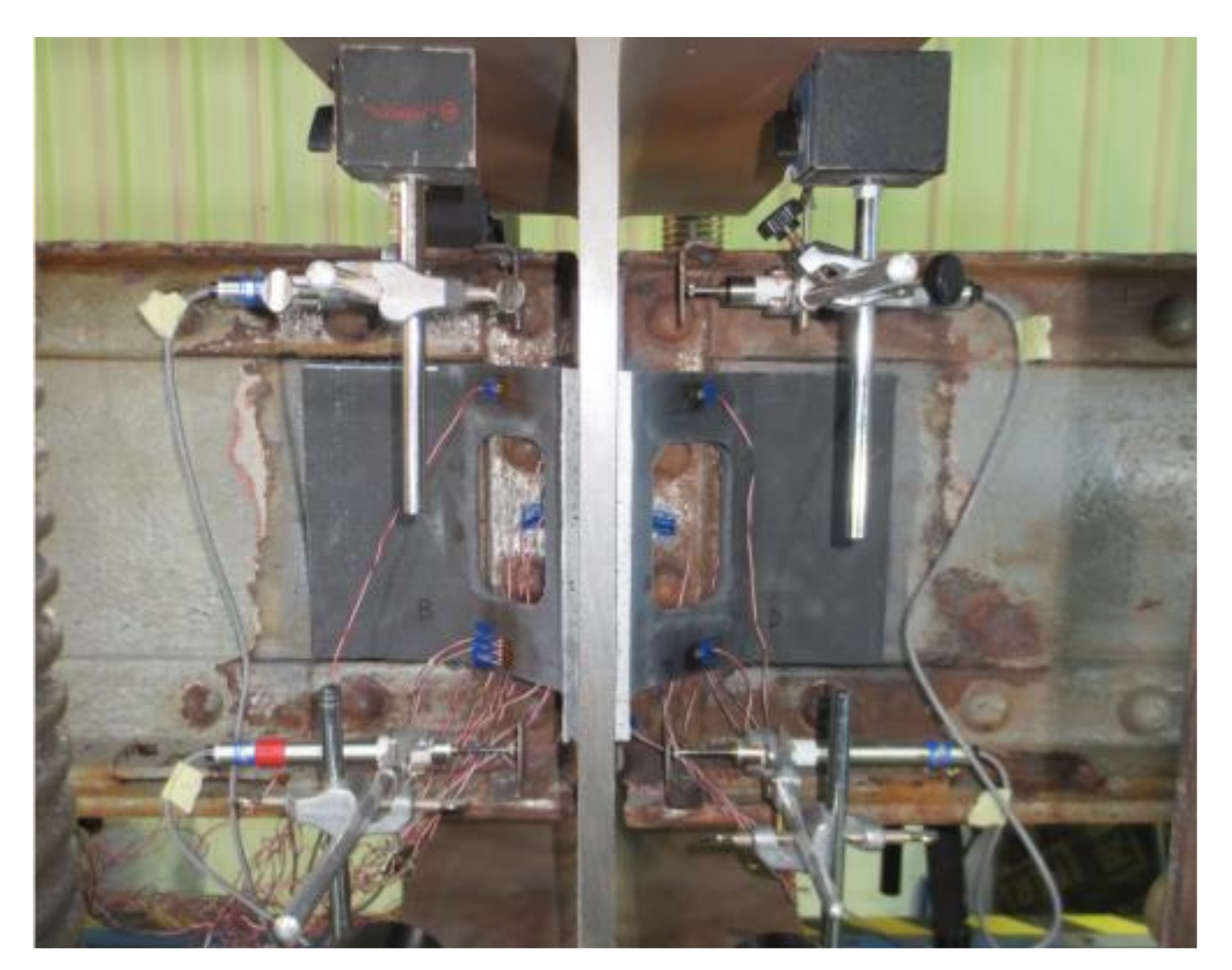
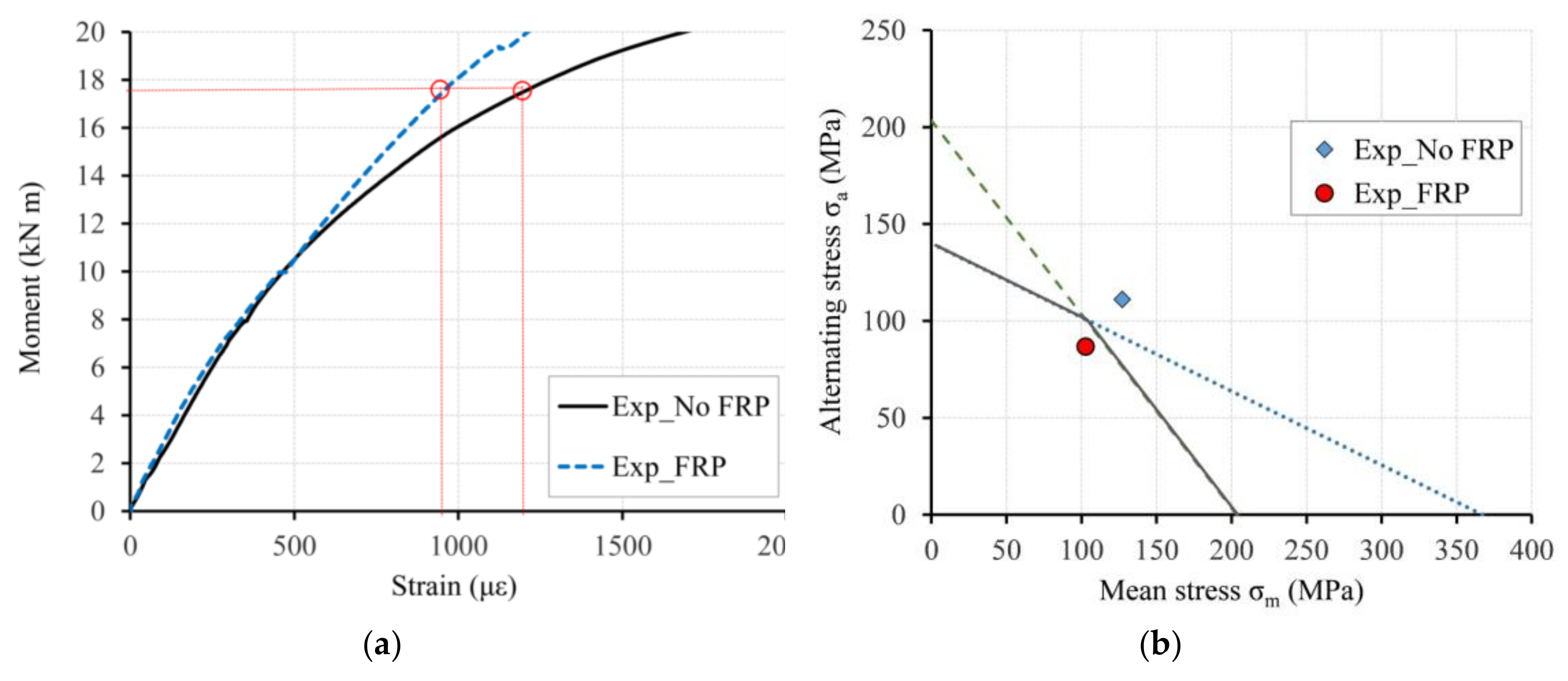
| Top/Bottom Chords | Diagonals | ||
|---|---|---|---|
| C1 | 2L90 × 90 × 13 + #450 × 13 + #500 × 13 | D1 | 2L75 × 75 × 7 |
| C2 | 2L90 × 90 × 13 + #450 × 13 + 2#500 × 13 | D2 | 2L80 × 80 × 9 |
| C3 | 2L90 × 90 × 13 + #450 × 13 + 2#500 × 13 + #500 × 14 | D3 | 2L80 × 80 × 10 |
| C4 | 2L90 × 90 × 13 + #450 × 13 + 2#500 × 13 + #500 × 14 + #500 × 10 | D4 | 2L80 × 80 × 10 + #160 × 10 |
| - | - | D5 | 2L80 × 80 × 13 + #160 × 12 |
| - | - | D6 | 2L90 × 90 × 13 + #180 × 14 |
| Load Model | P (kN) | Q (kN) | q (kN/m) |
|---|---|---|---|
| UIC Load Model 71 | 250 | - | 80 |
| Spanish Standard 1902 | 130 | 105 | - |
| 335 locomotive + JJ92 wagons | 205 | 225 | - |
| Mechanical Property | Puddle Iron | Rivets | S275 Steel | Grade 6.8 Bolt |
|---|---|---|---|---|
| Tensile modulus (GPa) | 198 | 198 | 210 | 210 |
| Yield strength (MPa) | 313 | 313 | 275 | 440 |
| Tensile strength (MPa) | 367 | 367 | 430 | 600 |
| Train Load Model | K | MC | εmax, FEM(1) |
|---|---|---|---|
| kNm/rad | kNm | μm | |
| UIC Load Model 71 | 10,650 | 17.54 | 1439 |
| Spanish Standard 1902 | 11,540 | 10.64 | 669 |
| Renfe 335 Series + JJ92 wagons | 11,264 | 15.19 | 1103 |
| Fiber | E1 | E2 | ν12 | G12 | G13 | G23 |
|---|---|---|---|---|---|---|
| CF1 | 117,146 (1) | 11,853 | 0.322 (1) | 3285 | 3285 | 2968 |
| CF2 | 183,605 (1) | 10,950 | 0.328 (1) | 3034 | 3034 | 2749 |
| Fiber | F1t | F1c | F2t | F2c | S1 | S2 |
|---|---|---|---|---|---|---|
| CF1 | 1932 (1) | 487 | 49.6 | 49.6 | 55.0 | 55.0 |
| CF2 | 1663 (1) | 476 | 50.5 | 50.5 | 55.3 | 55.3 |
| Lam. | Stacking Sequence | Thickness (mm) |
|---|---|---|
| L1 | [45°/–45°2/45°/0°/90°/0°]s | 5.20 |
| L2 | [45°/–45°2/45°2/–45°/0°/90°2/0°]s | 7.48 |
| L3 | [45°/–45°2/45°2/–45°2/45°/0°/90°2/0°/0°2]s | 10.40 |
| UIC 71 | Renfe S335 | Spanish Standard 1902 | ||||
|---|---|---|---|---|---|---|
| Local FE Model | σm (MPa) | σa (MPa) | σm (MPa) | σa (MPa) | σm (MPa) | σa (MPa) |
| Non-strengthened | 150.48 | 134.44 | 117.22 | 101.18 | 74.25 | 58.21 |
| Laminate L1 | 122.27 | 106.23 | 97.72 | 81.68 | - | - |
| Laminate L2 | 113.46 | 97.42 | 92.27 | 76.23 | - | - |
| Laminate L3 | 106.92 | 90.88 | 86.13 | 70.09 | - | - |
| Test Specimen | σm (MPa) | σa (MPa) |
|---|---|---|
| Non-strengthened | 127.12 | 111.08 |
| CFRP-strengthened | 102.76 | 86.72 |
Publisher’s Note: MDPI stays neutral with regard to jurisdictional claims in published maps and institutional affiliations. |
© 2021 by the authors. Licensee MDPI, Basel, Switzerland. This article is an open access article distributed under the terms and conditions of the Creative Commons Attribution (CC BY) license (https://creativecommons.org/licenses/by/4.0/).
Share and Cite
Jimenez-Vicaria, J.D.; Gomez-Pulido, M.D.; Castro-Fresno, D. Numerical and Experimental Evaluation of a CFRP Fatigue Strengthening for Stringer-Floor Beam Connections in a 19th Century Riveted Railway Bridge. Metals 2021, 11, 603. https://doi.org/10.3390/met11040603
Jimenez-Vicaria JD, Gomez-Pulido MD, Castro-Fresno D. Numerical and Experimental Evaluation of a CFRP Fatigue Strengthening for Stringer-Floor Beam Connections in a 19th Century Riveted Railway Bridge. Metals. 2021; 11(4):603. https://doi.org/10.3390/met11040603
Chicago/Turabian StyleJimenez-Vicaria, J. David, M. Dolores Gomez-Pulido, and Daniel Castro-Fresno. 2021. "Numerical and Experimental Evaluation of a CFRP Fatigue Strengthening for Stringer-Floor Beam Connections in a 19th Century Riveted Railway Bridge" Metals 11, no. 4: 603. https://doi.org/10.3390/met11040603
APA StyleJimenez-Vicaria, J. D., Gomez-Pulido, M. D., & Castro-Fresno, D. (2021). Numerical and Experimental Evaluation of a CFRP Fatigue Strengthening for Stringer-Floor Beam Connections in a 19th Century Riveted Railway Bridge. Metals, 11(4), 603. https://doi.org/10.3390/met11040603








